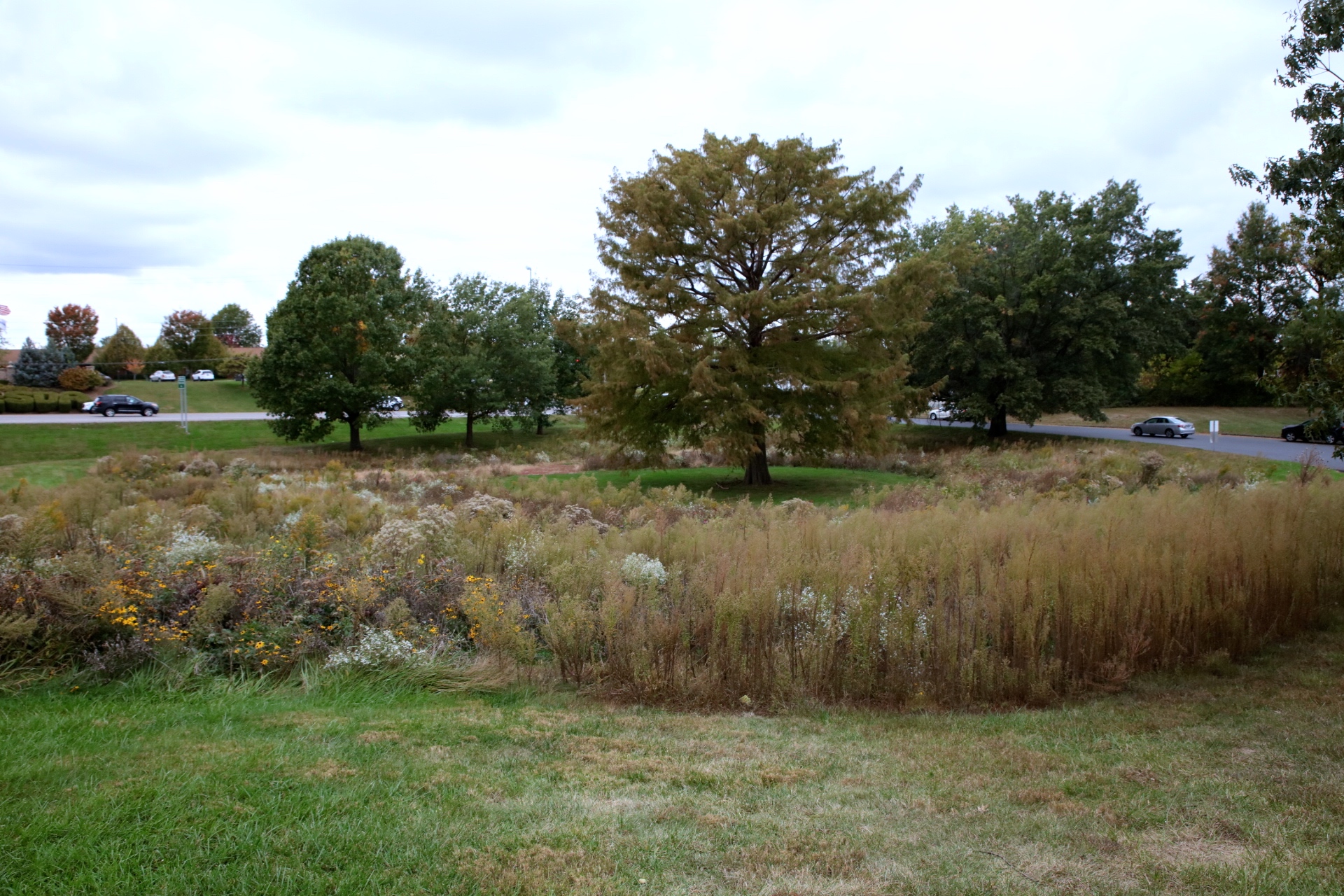What may look like an unkempt lawn to some at the entrance to the Wohlwend Elementary School campus is, in fact, a unique outdoor learning space for students and the community alike.
The project, called Wohlwend GROWS, came to be after the Mehlville School District was awarded two grants from the Missouri Department of Conservation. GROWS stands for “garden revitalization of Wohlwend School.” Portions of the school grounds have been restored to native prairie flora, providing outdoor learning opportunities for students at Wohlwend.
The district was one of the last recipients of the grant, called the Community Conservation Grant, which is no longer in existence. The district got two successive grants two years in a row, totaling about $35,000. The grants have covered the entirety of the garden restoration project at Wohlwend.
The project was in part spearheaded by Mehlville School District’s head groundskeeper Gerry Spitznagel, who helped put together Wohlwend’s original butterfly garden.
“I helped with that original butterfly garden, which was very small, and when I saw the area I got really excited. I had just happened to meet someone who worked for the Missouri Department of Conservation. … I asked her to come by and take a look at the space that we had,” Spitznagel said. “When she came by, she was also very excited about what she saw, the opportunities … It’s a large campus … there’s a lot of turf grass.”
There are three prairie habitats on the campus – two in the front and one behind Oakville Middle School’s track, all three of them featuring different native flora species. The process of rehabilitating the native prairie was more involved than simply letting the turf lawn grow out. After the district was awarded the grant, the process began with what Wohlwend Principal Dave Meschke called “a grass kill.”
After the grass kill, Spitznagel planted cover crops such as turnips and different kinds of oats to add nutrients back into the ground. The crops were left to rot to further fertilize the ground before it was scrapped and seeded.
“The funny story with the turnips is we had people going out and pulling turnips up and taking them home with them. So that was a lot of fun and that the community recognized what we had going there,” said Spitznagel.
Three different types of seeds were purchased from Pure Air Natives, one for each prairie, and were planted throughout the course of a day.
“It’s only in its second growing season so the next several years is going to be spectacular,” Spitznagel said. “A huge benefit also that I don’t know that a lot of people realize is the grass that we do not have to cut anymore has saved the district money because we’ve done two acres of prairie plus 6,000 square feet of pollinator gardens and things like that.”
The entrance to the Wohlwend/Oakville Middle campus features a large rehabilitated prairie, with native wildflowers and grasses. A “bluebird trail” featuring 10 bird houses built by the school’s Conservation Club are scattered throughout the outdoor learning space.
At the back of Wohlwend is the outdoor classroom, with a pollinator garden and dry creek bed. Teacher Betsy Leeker said that outdoor space has given students new and unique learning opportunities, since the prairie and garden attract several insects, animals and important pollinators.
“Students are learning about plants that would have been here long before we were, and that’s why they thrive and grow and attract so many local animals. … They (students) always find something new out in the prairie,” Leeker said. “There’s an … area that has a dry creek bed that will fill up with water and kids like to see when tadpoles come in the spring.”
Leeker added that the space had an added benefit during the COVID-19 pandemic by providing an area for students to spend more time outdoors.
“I think a lot of staff realized kids were more engaged and learning more and were more curious. Their behavior seemed to be a lot better sometimes when they were outside, where they were able to have the space to move and explore,” Leeker said.
The project also aligns with “place-based education” that teachers are getting training in. Place-based education is implementing the idea of “place” in teaching, which Leeker called “anywhere, anytime learning.”
“We can learn from community members, we can learn from the place we have outside our classroom door and really just anything in our community so our students can get a true appreciation and understanding of where they live,” Leeker said. “It just makes the learning more relevant to them.”
The project is still somewhat in its early stages, with little bits and pieces down every year for the last four to five years. Some of the future plans for the space include outdoor study nooks, benches and a shade garden. The prairie will also have to undergo a controlled burn every two to five years, which helps control the weeds. Since it’s in its second grow season, a controlled burn will probably take place before the end of the February, and will be overseen by the Mehlville Fire Department. A burn captain, trained by the Missouri Prairie Foundation and Department of Conservation, will oversee the burn, alongside the fire department.
“The first couple of years, the reason you don’t see a lot and it doesn’t look good, is because all (the prairie) is doing is working on its root system … We threw out about probably close to 100,000 seeds per prairie … so this burn will kind of help to thin out any turf grass that has grown, any annual weeds,” Spitznagel said. “Prairies naturally were controlled by fire when they were just growing naturally.”
The district also wants the prairie to be a community space, open for local residents after school and on the weekends to check out and learn more about what Oakville used to look like.
“Prairie is what this area used to be made of and they’re quickly disappearing, so this is just a way to make Oakville look like it used to while also giving a great space for kids to learn,” Meschke said. “It’s a place that’s going to benefit all the different wildlife that uses our area or uses our area as a highway back and forth throughout the country.”


